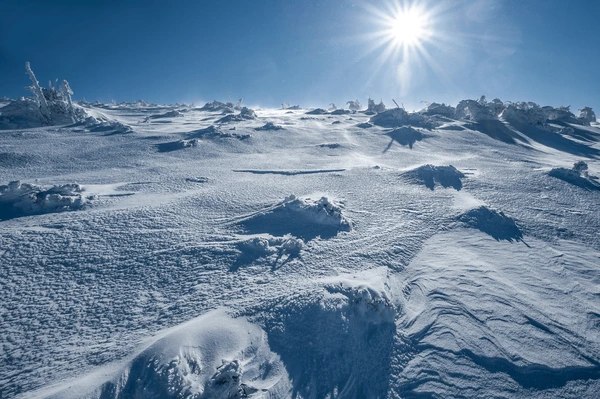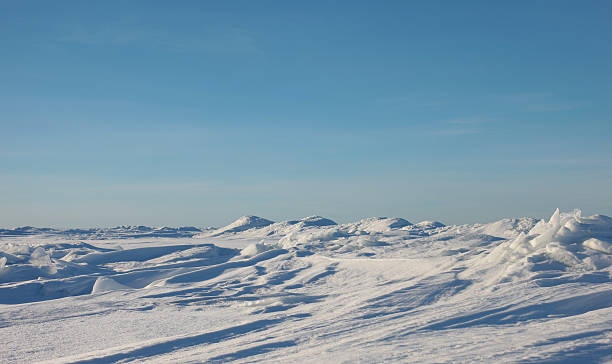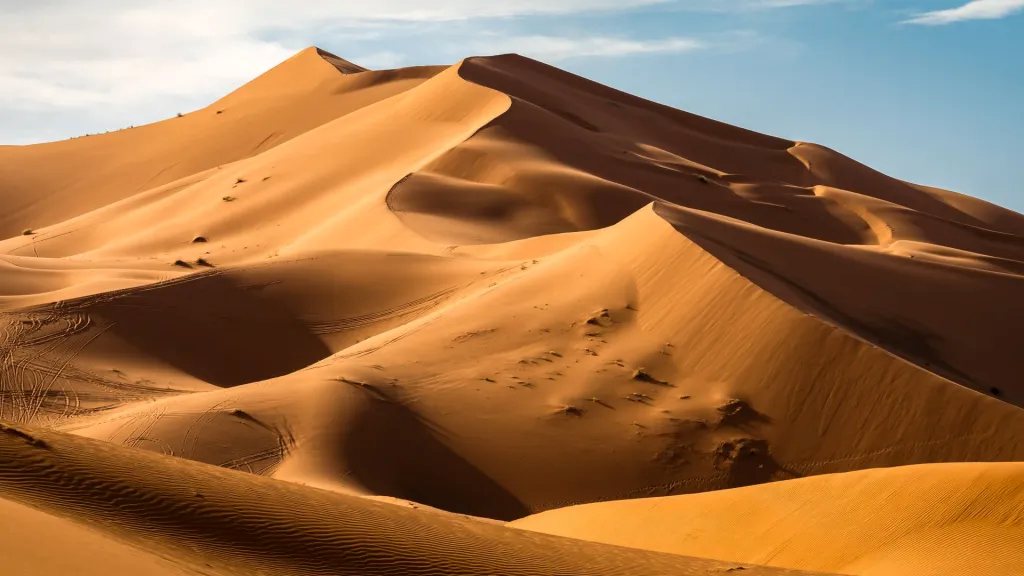Did you know the largest desert in the world isn’t hot? It’s cold! Surprised? A desert doesn’t need to be sandy—it just has to be very dry. Antarctica is the largest desert on Earth. This continent, lying at the bottom of the world, covers a massive 14.2 million square kilometres.
It’s so dry and icy that only a few hardy creatures can survive there, making it the biggest desert in the world. The second largest desert in the world is the Arctic Desert, covering approximately 13.9 million square kilometres (5.4 million square miles).
This polar desert spans parts of Eastern Europe, Northern America, Northern Asia, and Northern Europe, characterised by vast expanses of ice, tundra, and permafrost.
Talking about the third-largest desert, the Sahara, it lies in North Africa. It stretches across 9.2 million square kilometres and is famous for its golden sand dunes and scorching heat.
What’s special about these deserts? Antarctica holds ice that’s millions of years old, giving scientists clues about Earth’s past. The Sahara, on the other hand, has hidden oases and ancient ruins that tell stories of early human life. These deserts may be extreme, but they’re full of wonder and surprises!
Check Out| Why most of the world’s tropical deserts located on the Western margins of continents?
What is a Desert?
A desert is a dry, barren landscape that receives very little rainfall—typically less than 250 mm (10 inches) per year. Deserts can be hot, like the Sahara, or cold, like Antarctica.
They often have extreme temperature fluctuations, with scorching heat during the day and chilly nights. Deserts are defined not by their temperature but by their dryness.
Despite their harsh conditions, deserts are home to a variety of plants and animals that have adapted to survive with minimal water.
Which is the Largest Desert in the World?

Source: Shutterstock
The largest desert in the world is the Antarctic Desert, covering approximately 14.2 million square kilometres (5.482 million square miles).
Despite being an ice-covered region, it holds nearly 70% of the Earth's freshwater in the form of ice.
The Antarctic Desert is home to unique wildlife, including penguins and seals, and contains valuable climate records within its deep ice layers, which can reach depths of over two miles.
Discover| Which is the Smallest Country in the World? Here Are the Top 10!
Where is the Largest Desert in the World Located?
The Antarctic Desert is located in Antarctica and its surrounding oceanic areas. It is classified as a polar desert due to its extremely low precipitation and freezing temperatures.
What Is the Difference Between Polar and Non-Polar Deserts?
Deserts are classified based on their climate, vegetation, and geographical features. Among them, polar deserts and non-polar deserts (often referred to as hot or cold deserts) exhibit distinct characteristics.
1) Polar Deserts

Polar deserts are located in the polar regions of the Earth, specifically around the Arctic and Antarctic.
They are characterised by extremely low temperatures, with mean temperatures during the warmest month typically -10∘C (50°F).
Annual precipitation is very low, often less than 250 millimetres (about 10 inches), primarily falling as snow.
I. Geography and Vegetation:
These deserts are often covered with ice sheets or glaciers, leading to a barren landscape with little vegetation.
The vegetation that does exist mainly consists of lichens and mosses, which are adapted to survive in harsh conditions.
The ground can feature patterned textures due to freeze-thaw cycles, creating unique geological formations.
II. Fauna:
Animal life in polar deserts includes species specially adapted to extreme cold, such as polar bears in the Arctic and various penguin species in Antarctica. These animals possess thick layers of fat and fur for insulation.
2) Non-Polar Deserts

Non-polar deserts can be categorised into hot deserts (like the Sahara) and cold deserts (like the Great Basin).
Hot deserts experience high temperatures, often exceeding 40∘C (104°F), while cold deserts have lower temperatures but are still warmer than polar deserts.
Precipitation in non-polar deserts is also scarce but can occur irregularly throughout the year.
Hot deserts typically receive less than 250 millimetres of rain annually, while cold deserts may receive slightly more but remain arid.
Explore More| List Of Top 10 Coldest Places In India | Don’t Miss the Hidden Gem at Number 10!
I. Geography and Vegetation:
Non-polar deserts feature a variety of landscapes, including sandy dunes, rocky plateaus, and gravel plains. Vegetation is sparse but includes species like cacti and shrubs that have adapted to conserve water.
II. Fauna:
The fauna in non-polar deserts includes a range of species adapted to heat or cold. For example, animals like camels thrive in hot deserts, while species such as jackrabbits may inhabit cold deserts.
For You| Which is the Coldest Country in the World? Check India’s Rank!
Which is Bigger, the Sahara or the Antarctic Desert?
The Antarctic desert is the biggest desert in the world, covering an area of approximately 14.2 million square kilometres.
On the other hand, the Sahara Desert covers an area of approximately 9.2 million square kilometres, making it the third biggest desert in the world after the Arctic desert.
Since the deserts are divided into polar and non-polar categories, in the polar category, the Antarctic desert is the largest, whereas in the non-polar category, the Sahara is the largest hot desert in the world.
What's Next| 10 Hottest Countries in the World | Where Does India Stands? Check Here!
Comments
All Comments (0)
Join the conversation